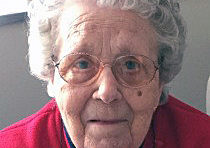Living with Intention: John & Janice Stiefel
- Share
- Tweet
- Pin
- Share

Over two decades ago John and Janice Stiefel, then residents of Plymouth, Wisconsin, set out on a mission to purchase property in Door County. Each weekend they packed the car and headed north, winding their way up to Gills Rock, stopping to view open meadows and wooded parcels, and to watch the progression of blooming wildflowers.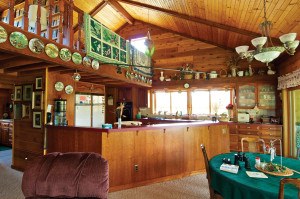
After each trip they returned home late in the evening, notebooks full of scribbles and sketches, heads full of data. John, an engineer and architect, and Janice, an entomologist, were no strangers to hiking fields and wading through bogs, and in 1993, after four years of trips, they finally ambled east down Grove Road, just north of Baileys Harbor. At the end of the road they discovered a 40-acre parcel filled with wetlands, wild plants and wildlife; it would become their project, passion and experimental home.
“Janice said she wanted to live conventionally in a non-conventional home, and that’s what we did,” John said.
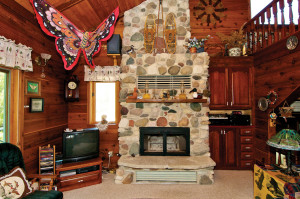 The Stiefels bought the property to save it, and, for them, part of saving the property involved learning to live in the most ecologically responsible way possible. When they set out to build their home in 1996, the Steifels were determined to experiment with alternate ways to live in greater harmony with nature. After several re-designs, John constructed a home comprised of 1,800 square feet of living space and an additional 1,200 square feet to house mechanicals, a root cellar, and a research center that John and Janice shared.
The Stiefels bought the property to save it, and, for them, part of saving the property involved learning to live in the most ecologically responsible way possible. When they set out to build their home in 1996, the Steifels were determined to experiment with alternate ways to live in greater harmony with nature. After several re-designs, John constructed a home comprised of 1,800 square feet of living space and an additional 1,200 square feet to house mechanicals, a root cellar, and a research center that John and Janice shared.
At first glance, this attractive, two-story home with wide porches, generous windows and sun-filled rooms looks like many other homes and belies its unique functionality. A closer look uncovers a non-conventional, energy-efficient home with grid-tied solar electric (the first seven years the Stiefels lived completely off-the-grid with solar collector panels and lead-acid batteries providing power), a propane fueled refrigerator, composting toilets that require no water, a botanical gray water treatment system, no septic system and no well.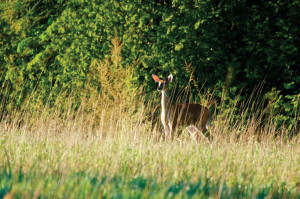
Sitting at the kitchen table, John points out the front window to Emerald Pond, a man-made pond that took two years to construct and provides all of the water, including drinking water, for the property. Surrounding the pond and throughout the property are nearly two miles of walking paths including 1,000 feet of boardwalks that traverse habitat for Showy Lady’s-slippers, Twinflower, Joe Pye Weed and numerous other species. The southwest corner of the property, consisting of all wetlands, lies untouched and inspired the property’s name: Hidden Corners Sanctuary.
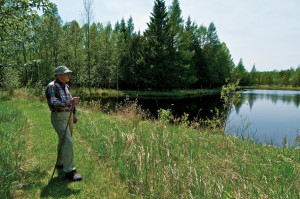 Stiefels’ land is adjacent to Mud Lake State Natural Area and is almost entirely surrounded by Door County Land Trust, Nature Conservancy, DNR and other privately owned and protected lands. It is a haven for flora and fauna of all kinds, including the federally endangered Hines Emerald Dragonfly. In 1999, the Stiefels donated a conservation easement on the property to the Door County Land Trust, ensuring the land will forever remain in its natural state, with only one single family residence allowed on the property.
Stiefels’ land is adjacent to Mud Lake State Natural Area and is almost entirely surrounded by Door County Land Trust, Nature Conservancy, DNR and other privately owned and protected lands. It is a haven for flora and fauna of all kinds, including the federally endangered Hines Emerald Dragonfly. In 1999, the Stiefels donated a conservation easement on the property to the Door County Land Trust, ensuring the land will forever remain in its natural state, with only one single family residence allowed on the property.
The house that John and Janice built was not just atypical in 1996, but even today it would be considered pushing boundaries. In Door County, a thin layer of soil sits atop highly permeable limestone that is a direct conduit to our aquifer. As a result, groundwater and wastewater issues are serious business and are highly regulated. John, however, applied for and was granted a rare, state-issued permanent experimental permit, which allows him to do just that: permanently experiment on how to treat and recycle waste.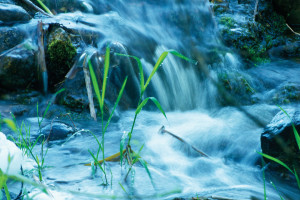
“The man who finally approved the permit said, ‘Well, you are a registered engineer. I guess I can’t deny you a permit if you’re the only one you are going to kill,’” Stiefel laughs.
One example of John’s experimentation is the intricate system used to remediate gray water produced from showering, laundering and kitchen use. In most homes, gray water goes into the municipal sewer system or into a private onsite wastewater treatment system, also known as a septic system. At the Stiefel home, however, it drains into what looks like a two-story greenhouse, which is actually a homemade, artificial wetlands that filters the gray water through layers of stone, pea gravel, filter fabric, coarse and fine sand, and acidic peat moss. The water is dispersed through pipes and percolates through the layers; bacteria from the roots of cattails, Soft-stem Bulrush and other plants growing in the greenhouse interact with the gray water to remove pathogens.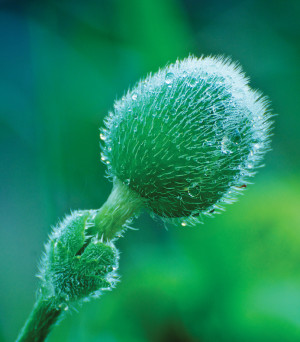
This system, along with the composting toilets, precludes the need for any type of septic system or sewer. Even if one’s hesitant about composting toilets in one’s home (and let’s face it, who isn’t?), the two Sun-Mar composting toilets in the Stiefel house allay concerns. The waste is collected in a rotating drum and peat moss and wood chips are added to help produce clean compost. A small, electric fan consistently runs, eliminating any odor. A system like this helps reduce a home’s water consumption by an impressive 30 to 40 percent or more.
The most surprising feature of this unusual home is how smoothly it functions. John remarks that it takes a bit more planning and more intentional living, but it is every bit as comfortable as any home, and has provided a wonderful and satisfying place to live.
“We are footsteps from civilization, but it’s so quiet and so private,” he says. “There is so much that is really right with this place; very few people are able to ever experience what we’ve experienced for so long.”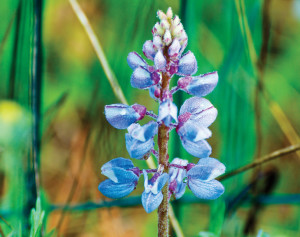
Janice, a true partner in every aspect of this grand experiment, passed away in 2008, but her written words echo a similar sentiment: “We all know that we can only inhabit or own our property for a fleeting moment in time.”
John continues to care for and protect what they’ve created.
“We are meant to live with nature. It is possible to live differently,” he says, “But you pay a price for it – in here.” He points to his heart.
Photography by Len Villano.

